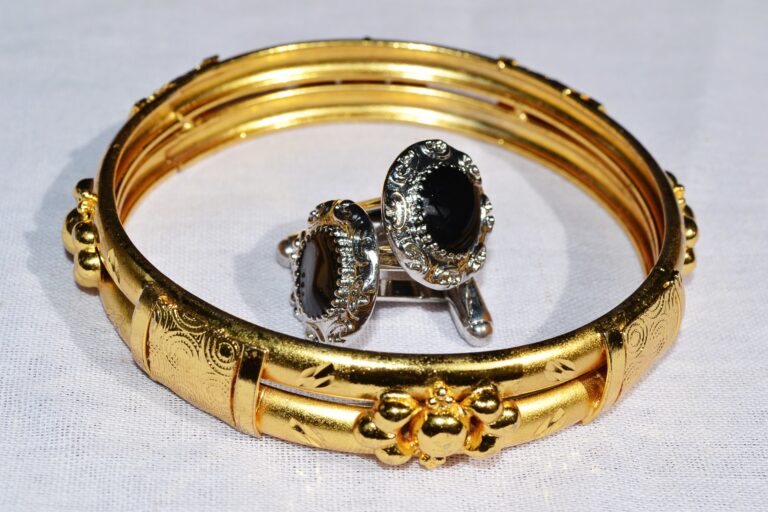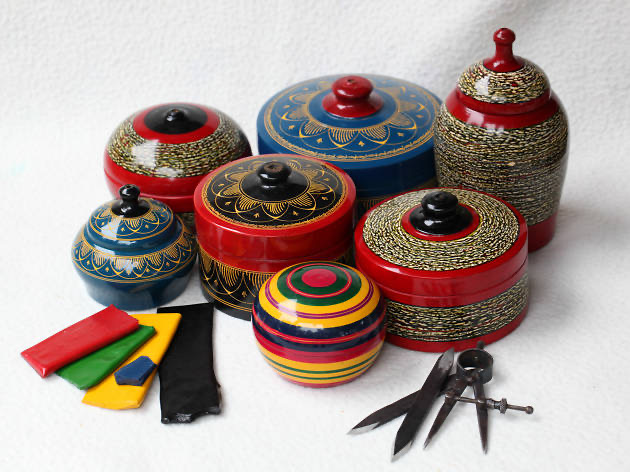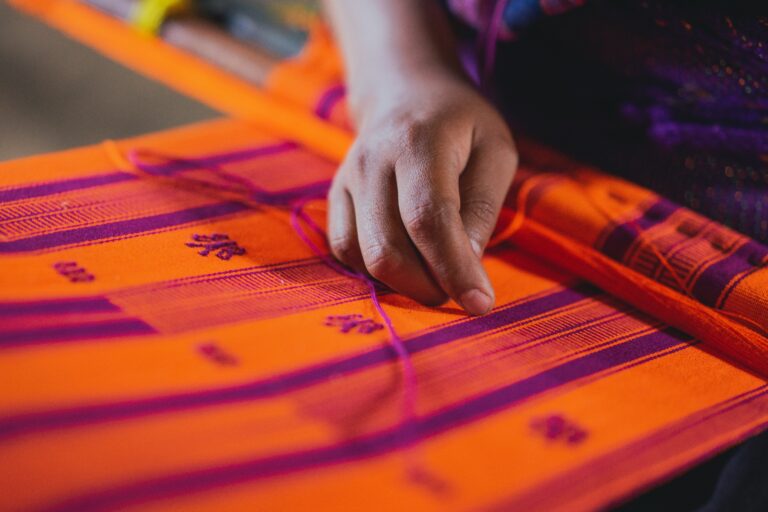With its rich and long heritage, the island takes pride in its own unique style of exquisite arts and crafts. These works of art have a distinctive Sri Lankan identity which has through the years evolved being enriched and inspired mainly by Buddhism, the majority religion of Sri Lanka. Among the colorful and intricate souvenirs are pieces of art in gold and silver jewelry studded with famous Ceylon gemstones, wooden masks, intricate lace-work, lacquer ware, pottery, handlooms, batiks, woodcarvings and many more.
Ancient Sri Lankan art with its roots deeply inlaid and interwoven with Buddhism has been expressed abundantly in Buddhist temple paintings. Bright colors and simple artistic depiction was the way in which early artists communicated stories of Lord Buddha’s many lives through his journey to Enlightenment to peasants and villagers for generations. However, Indian influence in both Sri Lankan arts and crafts is also apparent.
You can select from a large array of souvenirs from across the island from the numerous souvenir shops scattered in all the main tourist destinations. Reproductions of ancient mural art seen in temples have also become popular as souvenirs and gifts can be purchased directly from the artists along a popular street in Colombo.
Throughout history, jewelry has played a very important role in Sri Lankan culture and the island is internationally renowned for its gem stones. Due to its rich gem and jewelry history, centuries ago, Sri Lanka earned itself the nickname of ‘Ratnadeepa’ or ‘Gem Island’. Ratnapura, (meaning City of Gems), is a famous city in Sri Lanka known to be a treasure trove of valuable and exquisite jewels. On your visit to Sri Lanka make sure you pick up your own piece of jewelry set with the finest precious or semi-precious gem stones to a traditional or modern design in silver or gold.
Deeply connected with Sri Lankan folk-lore masks play an important part in dance-drama performances known as ‘devil dances’. These dances comprise of various elements that are depicted by different types of masks. Masks are also a distinct element in traditional processions and festivals. Elaborate stories are related by dancers wearing masks and are often used for healing rites as well as rituals. An ancient act known as the ’18 Sanni’ comprises of 18 different types of masked dances in traditional Sinhalese exorcism rituals. Ambalangoda, a coastal town in southern Sri Lanka is known to be the heart of mask carving where you can get a colorful souvenir.
Beeralu Lace
Beeralu Lace weaving is a traditional Sri Lankan cottage industry with a history of over 600 years. This charming craft was first introduced by the Dutch and the Portuguese during their colonial rule and is found to date along coastal households such as Weligama, Galle, Matara and Hambantota. Purely handmade with intricate and delicate designs the process of weaving Beeralu is interesting and fascinating to watch. Often Beeralu Lace is woven in long strips and thereafter attached on fabrics in attractive patterns to create various items such as trimmings in dresses and clothes, table cloths, mats, napkins, and coasters among others.
The island is known for its fine wood carvings for centuries with generations of dedicated wood carvers and carpenters who take great pride in their crafts. Various collections of wood carved products can be found to be taken as souvenirs from Sri Lanka including ornaments and jewelry pieces, figurines, sculptures, lacquer products, boxes and toys among others. Household items and furniture of the highest quality made out of various valuable timbers can also be bought in Sri Lanka. Popular are figurines of the Buddha which are intricately carved and in various sizes including those of elephants.
Originating in central Sri Lanka, the knowledge of ‘Laaksha’ as it is known had been founded in the remote village of Pellehapuwida in the hill country near Matale. The Lac resin secreted from the bark of certain trees that have been infested with the Lac beetle is collected for this work. The bark is scraped and thereafter bright pigments are mixed after the procedure of melting and straining the resin to obtain the desired colors. These skillfully made traditional handicrafts are a very popular choice for souvenirs and vary from brightly colored bowls, containers, vases and decorative items often having pleasing traditional floral patterns.
Even though the history of Batik goes back to Indonesia, Sri Lankan Batik has since evolved to be a popular and much sought after fashion statement with its own distinct style and aesthetic appeal. Inspired by unique Sri Lankan landscapes and traditional Kandyan designs and motifs these works of art are done on cotton or silk fabrics. Available in a wide range of wall hangings, clothing and many other daily used and decorative items they are created by a careful and detailed process to ensure unique styles and designs. Bright colors, striking patterns and superior quality have made Sri Lankan batiks much sought after.
Sri Lankan handlooms have a rich history and have been historically traded to other parts of the world like China, India and the Middle East and kept only for the royalty and prominent persons. In the past specific villages were allocated to practice the craft and the skill has been passed on from generation to generation. At present the handloom industry has become immensely popular given its environmentally friendly materials and artistic appeal with bright and distinct style and fashions. Many handloom products and popular brands are available in Sri Lanka. They range from saris, garments, curtains, cushion covers to toys, books and bags.
As one of the oldest crafts in Sri Lanka, pottery is still very popular and is an essential item in every household. Clay is freely available throughout the island and therefore potters are found almost in every district across Sri Lanka with potter families in every village. A wide range of artifacts from terracotta figurines, vases and many other ornamental and functional objects are found in shops especially around this area. Molagoda, a small village in Kandy is famous for pottery and you may enjoy the opportunity of watching the skilled craftsmen wield a pottery wheel to create works of art.










